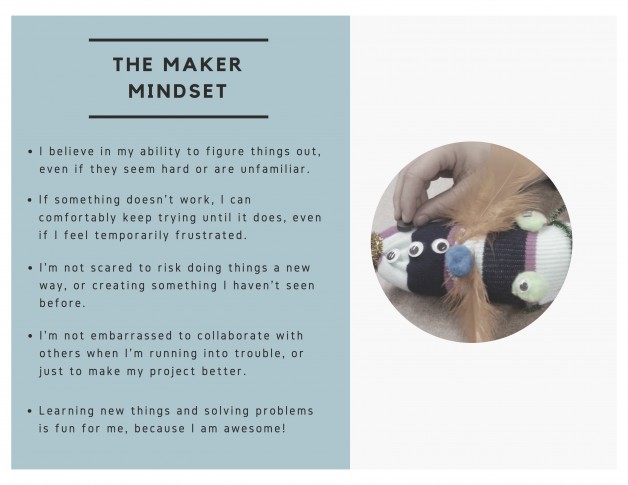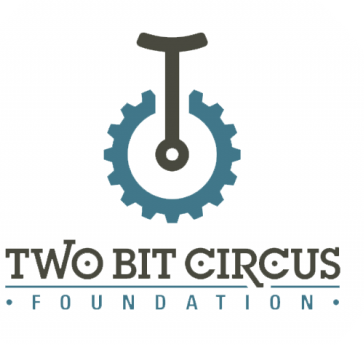
WHAT IS MAKER EDUCATION?
New: Check out our Maker Librarian training on Slideshare!
Maker Education is interest-driven, hands-on learning using the Making process: breaking down your goals into component parts, finding and accessing necessary information, and teaching yourself the skills to achieve them.

Maker Education is an outgrowth of the “Maker Movement,” which began about 10 years ago with the launch of MAKE: Magazine and the first Maker Faires. Comparable to DIY, but with an emphasis on community, its values include self-reliance, innovation, and curiosity. “Making” is a big umbrella covering anything you create and not just consume — from cooking to coding.
Maker Education can be used to teach many skills, but most importantly, it teaches how to learn.
When you learn in a Maker style, you gain:
- Resilience: When you make a project hands-on, you quickly learn that “failure” is just information to help you improve your design and succeed.
- Confidence: When you succeed in solving the problems that come up in making, you learn you are able to solve all kinds of problems, in your schoolwork and in all areas of life.
- Innovation and Creativity: When there is no “right way,” you learn how to invent new ways.
Here’s a taste of the research supporting the benefits of Maker-style education. No studies have yet been completed of Maker-style education specifically (we’re doing one this fall, funded by Google CS Open — if you’re reading this THANK YOU), but many of its components have been. These are:
- Out-of-school science activities raise test scores: NAEP scores show hands-on science matters, National Assessment of Educational Progress, January 25, 2011
- Numerous studies report strong positive associations between project-based learning and student development of cognitive competencies (p. 46, Project-Based Learning: A Literature Review, George Lucas Foundation, Pre-Publication Draft 2015)
- Increased cognitive competencies, as measured by standardized tests, are associated with “roughly a 20% increase in earnings for both men and women,” Education for Life and Work: Developing Transferable Knowledge and Skills in the 21st Century, National Research Council, 2012
- Motivated (interest-driven) attentional tasks drive improvements in attention span-persistence (Arts and Cognition Monograph: How Arts Training Influences Cognition, The Dana Foundation, 2008). Higher attention span-persistence at age 4 is linked to 49% greater odds of completing college (Relations between preschool attentional span-persistence and age 25 educational outcomes, Early Childhood Research Quarterly, 2nd Quarter 2013)


